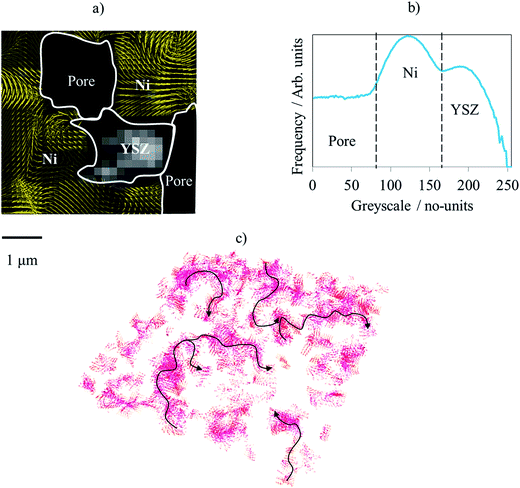Thermo Fisher Scientific › Electron Microscopy › Electron Microscopes › 3D Visualization, Analysis and EM Software › Use Case Gallery

Degradation mechanisms within solid oxide fuel cells (SOFC) during thermal cycling limit operational start-up times and cell lifetime, and must therefore be better understood and mitigated. This work explores such mechanisms using digital volume correlation (DVC) techniques applied to lab-based X-ray tomograms where the microstructural evolution is evaluated during the operational cycling of a Ni–YSZ/YSZ cell. To emulate reduced start-up times, five tomograms were collected over four operational thermal cycles to 750 °C at various ramp-rates: 3, 10, 20 and 30 °C min−1. Two key features are observed in the 3D strain profiles. Firstly, during low ramp-rates the material produces microscopic channels towards cluster-points. This is thought to be caused by the ceramic skeleton inhibiting the effects of sintering. Secondly, previously unseen macroscopic ‘waves’ developed after high-rate cycling, consisting of linear regions of compression and tension throughout the sample. These wave features decay away from a heterogeneous defect which is thought to be responsible for the non-uniform strain profile. This work demonstrates the first use of sub-micron DVC computations applied to an SOFC exposed to operationally relevant temperatures. These findings will assist in the development of new electrode materials from their fabrication to operation, ultimately supporting commercial viability of SOFCs.
To visualise the displacement and strain data obtained from the DVC computations, Avizo Software was employed to generate 3D displacement vector fields and strain volume renderings.
For Research Use Only. Not for use in diagnostic procedures.